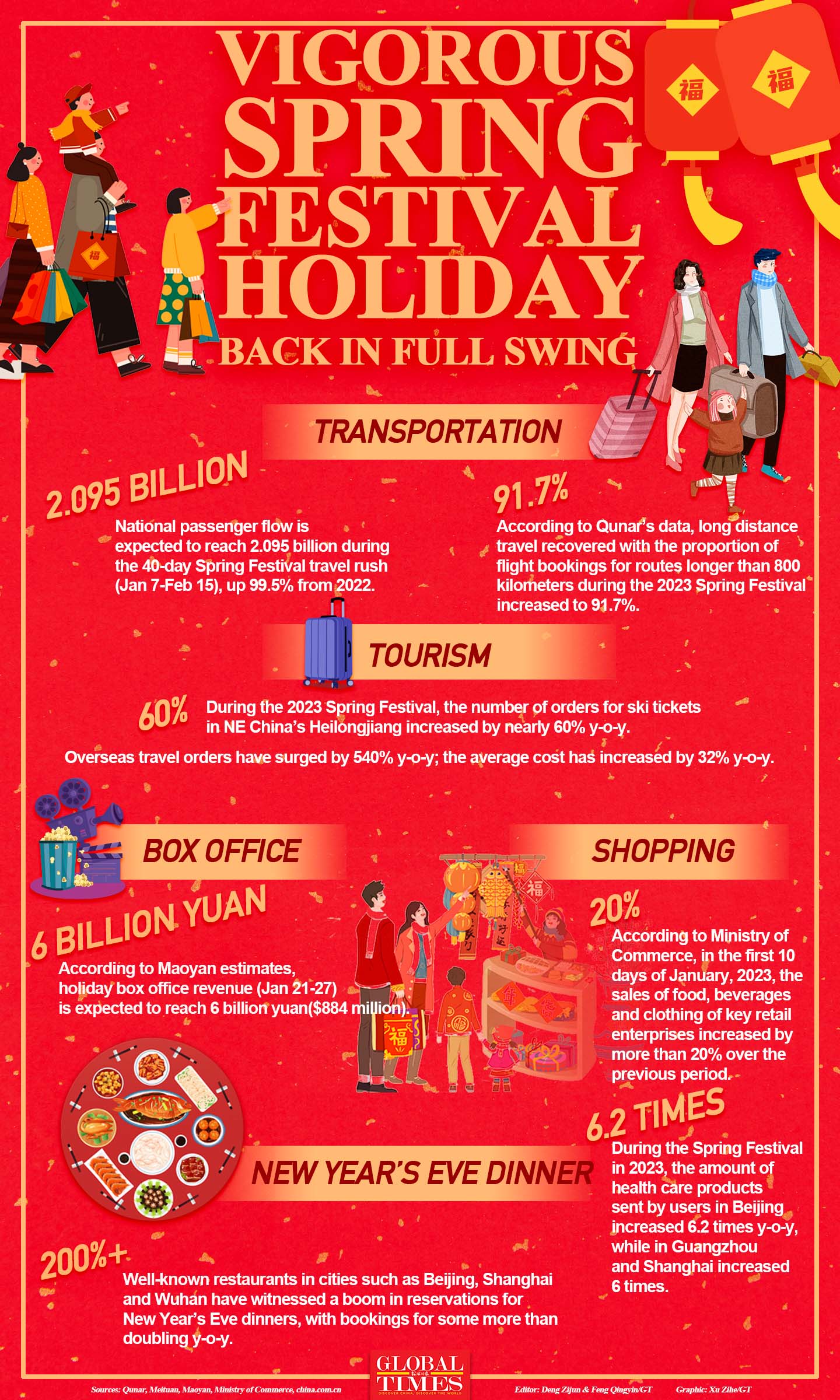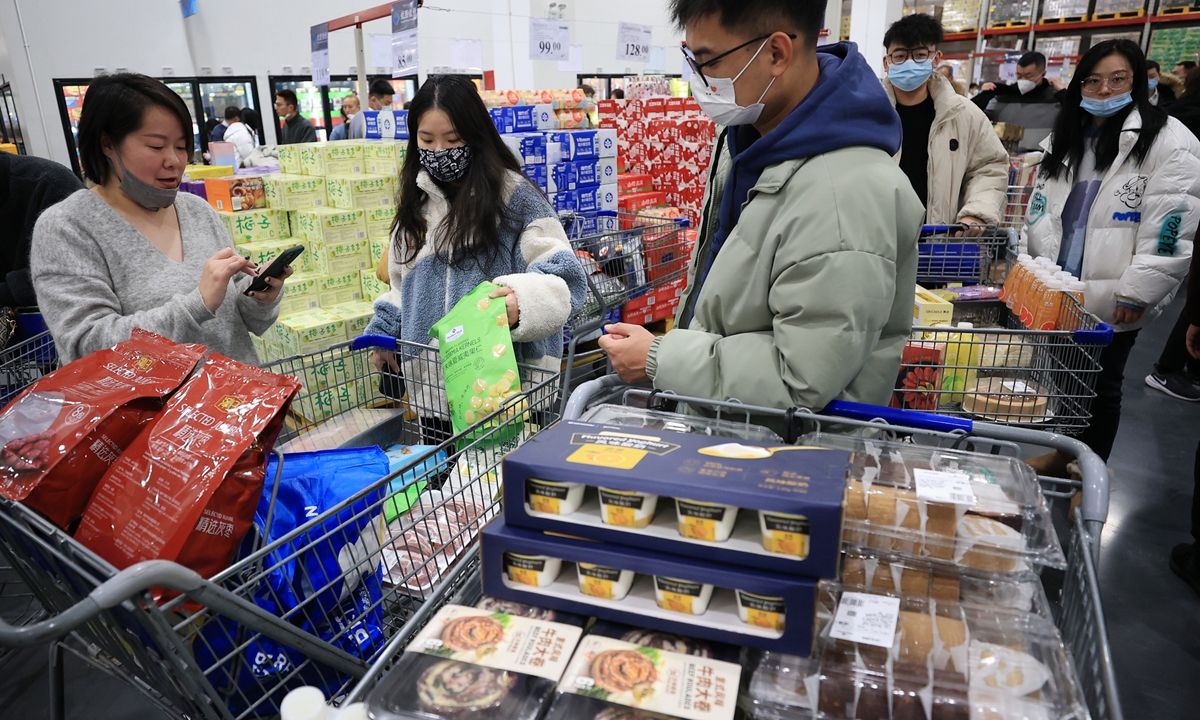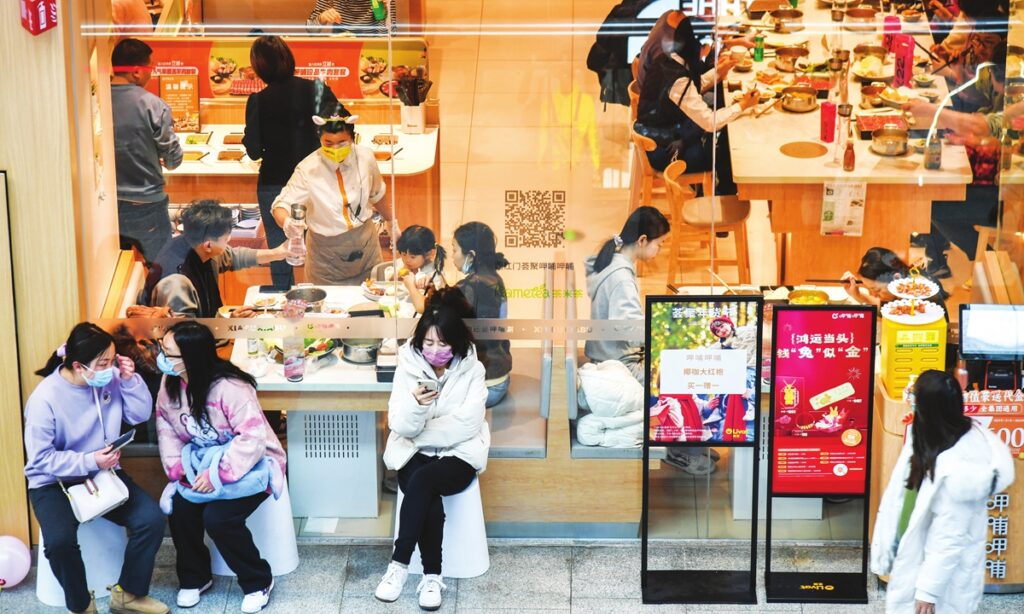Retail, catering, tourism accelerate recovery
The hustle and bustle of crowds has returned to restaurants, hotels and malls across China, as the nation heads into the first Spring Festival holidays after downgrading its management of COVID-19.
As more regions emerged from their infection peaks, a solid consumption rebound during the holidays and throughout the year is expected to inject strong momentum for the national economy this year, analysts said, citing the recovery of various industries and supportive government policies.
The recovery of in-person consumption scenarios such as retail, catering and cross-regional tourism has been accelerating, and online consumption has maintained strong momentum, Xu Xingfeng, an official of the Ministry of Commerce (MOFCOM), said at a press conference on Thursday.
In the first 10 days of January, sales of food, beverages and clothing at key retail enterprises each rose more than 20 percent month-on-month, according to Xu.
Some restaurants’ reservations for Chinese New Year’s Eve dinners more than doubled, and the booking rates of some homestays in popular tourist destinations like Shanghai and Yunnan exceeded 80 percent.
These findings fully demonstrate the strong resilience and vitality of China’s consumer market, Xu said.

Editor: Deng Zijun and Feng Qingyin/GT Graphic: Xu Zihe/GT
Such vitality is felt by many business owners across the nation. In Central China’s Hunan Province, Liu Renjun, a manager of Hunan Xiangjun Catering Co, told the Global Times on Thursday that business at his restaurants had clawed back to 80 percent of the 2022 level this week, the third week after the epidemic peaked in his city.
“All the New Year’s Eve dinner services and private rooms at my restaurant chain have been booked,” Liu said. “I checked the books, and revenues are back to 80 percent. Maybe people are still a bit concerned as the COVID wave just passed not long ago.”
“Our inventory of Russian goods has bottomed out, and we are waiting for the next batch of products to get through customs,” a manager surnamed Zhao at IGORI Russian Goods Market in Suifenhe, a border city in Northeast China’s Heilongjiang Province, told the Global Times on Thursday.
Both online and on-site purchases have increased for the Spring Festival, especially online, and the farthest express delivery has been sent to Sanya, South China’s Hainan Province, Zhao said.
The holidays will also mean busy transport across the country. The Ministry of Transport said that as of Wednesday, 480 million passengers had been transported by rail, road, water, land and air, up 47.1 percent over the same period in 2022.
The ministry expects passenger traffic to jump to 99.5 percent of the level of 2022, and the Civil Aviation Administration of China said that daily passenger flights will recover to 73 percent of 2019, the year before the pandemic.
Tourism is also recovering. Data from travel platform Qunar.com showed that as of Wednesday, flight bookings during the Spring Festival holidays had increased by 10 percent year-on-year, and the top three destinations were Chengdu, Beijing and Chongqing. The data also showed that long-distance travel had recovered significantly. For example, the proportion of bookings for routes of more than 800 kilometers had increased to 91.7 percent.
Reservations for theme parks were also up significantly. As of Wednesday, Shanghai Disneyland’s Spring Festival bookings had doubled year-on-year.
“Such figures show that consumption confidence is recovering and the tourism industry is moving in a positive direction,” Guo Lechun, vice president of the big data research institute of Qunar.com, told the Global Times on Thursday.
“The consumption rebound this year may exceed expectations formed late last year, for most of the regions across China have recovered from the epidemic,” Tian Yun, a veteran economist, told the Global Times on Thursday.
The biggest difference from previous years is that people are shopping with masks but without panic. Once daily life normalizes, consumption will surely get back, he said.

People go shopping at a large supermarket in Nanjing, East China’s Jiangsu Province on January 19, 2023. Local stores are seeing booming popularity as the Chinese Spring Festival is approaching. Photo: cnsphoto
China could see a sharp recovery in economic growth from the second quarter onward based on current infection trends, IMF Deputy Managing Director Gita Gopinath said on Wednesday, reported Reuters. “We expect growth in China to come back, to rebound,” Gopinath said.
The MOFCOM said it will focus on stabilizing and expanding automobile consumption, supporting the purchase and use of new-energy vehicles, and expanding the circulation of used cars.
With continuous efforts to expand spending, the recovery of bricks-and-mortar consumption will accelerate, and consumption this year will show a steady growing trend, according to the MOFCOM.
(Global Times)




